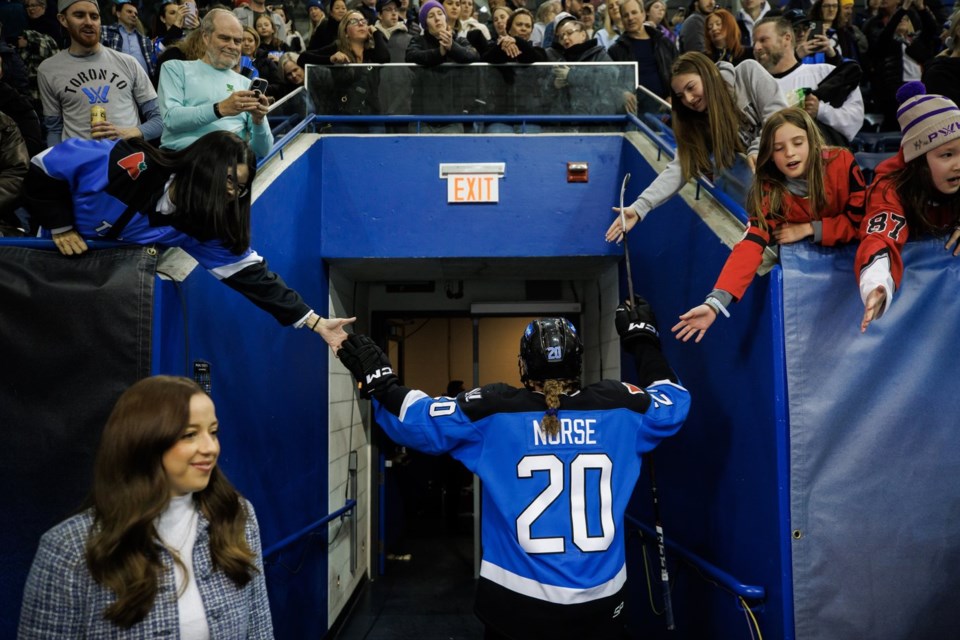TORONTO — A new study shows that more Canadian girls are participating in organized sports, but they are still lagging behind boys.
More than 5,000 Canadians, including 2,000 girls and women, responded to the study by Canadian Women & Sport. One of its most significant findings was that 63 per cent of Canadian girls play organized sports weekly, compared to 68 per cent of boys.
"I was so pleased to see that we were able to report that more girls are playing, that the rates of participation are up," said Allison Sandmeyer-Graves, CEO of Canadian Women & Sport. "That is what this organization in large part has been working towards for so many years, is creating a Canadian landscape in which girls are playing at least as much as boys and we know that number is also too low.
"We just want to see those numbers rise year over year every couple of years when we do this research."
Four in 10 girls also reported being more interested than ever in playing sports and being active.
The rapid growth of the Professional Women's Hockey League, the announcement of a WNBA franchise in Toronto, and the imminent arrival of the Northern Super League, has also led to greater fan engagement with seven in 10 girls reporting they are keen to engage in women’s sports as fans.
"I was thrilled to see that," said Sandmeyer-Graves. "I think it gives us a lot of reasons of hope that the historic levels of awareness and action that have been going towards shifting the system to be more supportive of girls participating seems to be working.
"I hope that this could be a positive trend if we keep being intentional and keep that goal front and centre."
Despite those positive signs, the report also found nearly four in 10 girls are still missing out on the benefits of sport. That number rises to five in 10 by age 16.
Adolescence and the middle teenage years seem to take a toll on girls' participation in sports. The report found that dropout rates increase at age 16 and accelerate through their late teens, with more than one in five leaving sport during adolescence, for a few reasons.
Two in five girls report that comments about their appearance, clothing, or religious attire impact their participation in sport.
One in two girls said participating in sport positively influences their body image, though one in three report that comments about their bodies undermine their confidence.
Nearly one in two girls aged 13 to 18 feel that their menstrual cycle impacts their participation in sport.
"I think the dropout rate is still concerning and I think the big piece of it that was different for me, or something that I don't think I necessarily thought about a ton as a kid, was the impact of menstruation on the participation in sport," said WNBA player Kia Nurse, who is a member of the advisory group for Canadian Women & Sport. "When I think back to my own experience, going through that change and puberty and the change into womanhood and all that, it does take a toll on you.
"For me personally, I was grateful that I had a female coach on my team so there was somebody that I could go to."
Both Sandmeyer-Graves and Nurse said that having women in coaching, administrative and other leadership positions was an important takeaway from the Rally Report.
"We need coaches and program leaders who aren't just trained in the Xs and Os of the sport or if you like the technical and tactical aspects of the sport, but leaders who are trained how to foster belonging for young people in a sport environment," said Sandmeyer-Graves. "That's a very specific set of skills.
"I think many people understand those concepts and they can apply it to sport, but how do we make it intentional? How do we make it consistent across every coach and across every sport environment?"
Nurse has represented Canada at three Olympics, but started playing as a youth for Transway Basketball, an all-girls' rec program in Hamilton. She said that program was "transformative" because there were always other girls and women around to help her and her teammates feel comfortable.
"I never had to deal with the 'you're really good for a girl,' kind of comment," said Nurse, who is also a broadcaster for TSN. "I was surrounded by women, my sister (Tamika) had gone through the program before me.
"It was just these strong, powerful women, constantly around me and we don't have enough of that, right? We had male coaches within that system, but every team you grew up on had a female coach on it."
Canadian Women & Sport is a national nonprofit with a 43-year history as an authority on women and sport.
This report by The Canadian Press was first published Nov. 18, 2024.
John Chidley-Hill, The Canadian Press




